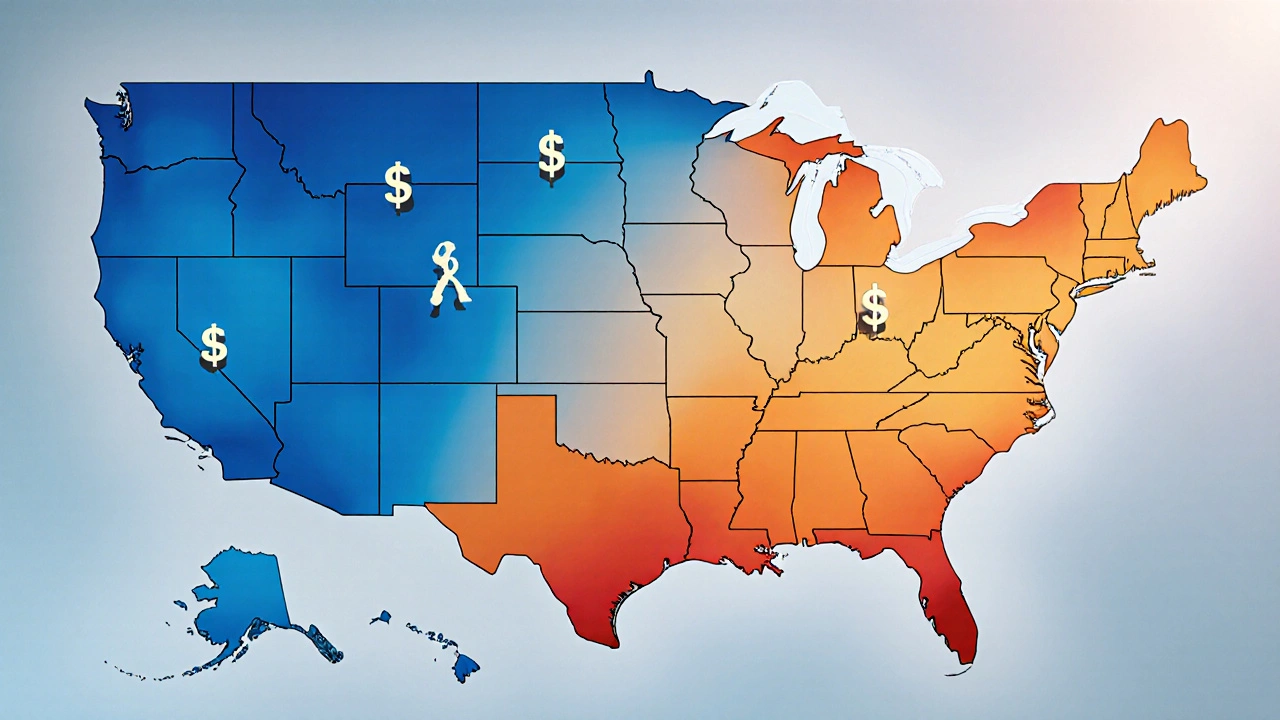Discover which U.S. states provide the lowest IVF costs, why price gaps exist, and how to lower expenses while maintaining high success rates.
Read MoreIVF Price Comparison: Your Guide to Affordable In‑Vitro Fertilization
When diving into IVF price comparison, the process of evaluating the total cost of in‑vitro fertilization across different providers and financing options. Also known as IVF cost analysis, it helps couples spot hidden fees, weigh success rates, and choose a plan that fits their budget. The first major factor is the fertility clinic, the medical center where IVF cycles, embryo culture, and transfers happen. Clinics differ in laboratory technology, staff expertise, and package structures, which directly influence the price you pay per cycle. Next, insurance coverage, the health‑policy benefits that may reimburse part of the IVF expenses varies widely; some policies cover medications, others only the procedure itself, and many require pre‑authorization. Adding to the mix, government subsidies, state‑run financial assistance programs that reduce out‑of‑pocket costs for eligible couples can lower the baseline fee dramatically, especially in states with active reproductive health initiatives. IVF price comparison becomes essential because each of these entities—clinic, insurance, subsidy—interacts to create a unique cost profile for every patient.
Key Elements That Shape Your IVF Budget
Understanding the full cost picture starts with the core components of an IVF cycle. The procedure fee typically includes ovarian stimulation monitoring, egg retrieval, and embryo transfer; however, the price tag can jump when you add advanced embryology services like embryo freezing, pre‑implantation genetic testing, or donor egg programs. The fertility medication, hormonal drugs used to stimulate egg production often accounts for the largest slice of the bill, and costs differ based on brand, dosage, and pharmacy discounts. Some clinics bundle medication into a single package, while others bill it separately, making a direct price comparison, side‑by‑side look at total outlay per cycle crucial to avoid surprise expenses. The success rate of a clinic is another decisive attribute. Higher success percentages usually justify higher fees because they can reduce the number of cycles needed to achieve pregnancy. When you compare IVF prices, also compare success metrics, live‑birth rates per embryo transfer for specific age groups. A clinic with a 45% live‑birth rate for women under 35 may cost 20% more, yet the overall financial picture could be better if fewer cycles are required. Financial relief options extend beyond insurance and government aid. Many private clinics offer financing plans, low‑interest loans or installment schemes designed for fertility treatments, allowing couples to spread payments over months or years. Some NGOs and charitable organizations provide grants for low‑income families, especially for those with medical conditions that raise the risk of infertility. When you gather all these data points—clinic fee, medication costs, success rates, insurance payouts, subsidies, and financing—you create a comprehensive IVF price matrix that lets you make an informed decision. In practice, a solid IVF cost calculator, an online tool that aggregates all cost variables into a single estimate can streamline this process. Input your age, preferred clinic, medication brand, and insurance details, and the calculator will output a range that reflects realistic out‑of‑pocket spending. Look for calculators that also factor in ancillary costs like travel, accommodation (if you need to visit a clinic far from home), and post‑procedure follow‑ups. Finally, remember that transparency is key. Reputable clinics provide a detailed breakdown of every charge, from lab fees to administrative overhead. Ask for an itemized quote before signing any agreement, and request clarification on any “hidden” fees that could appear later, such as extra embryo freezing cycles or unexpected lab tests. By systematically comparing each element, you empower yourself to choose a cost‑effective path without compromising on quality or safety. Below you’ll find a curated list of articles that dive deeper into each of these topics— from decoding medication pricing to navigating insurance claims, from understanding government subsidy eligibility to selecting the right financing partner. Use this resource to sharpen your IVF price comparison skills and take confident steps toward building your family.





